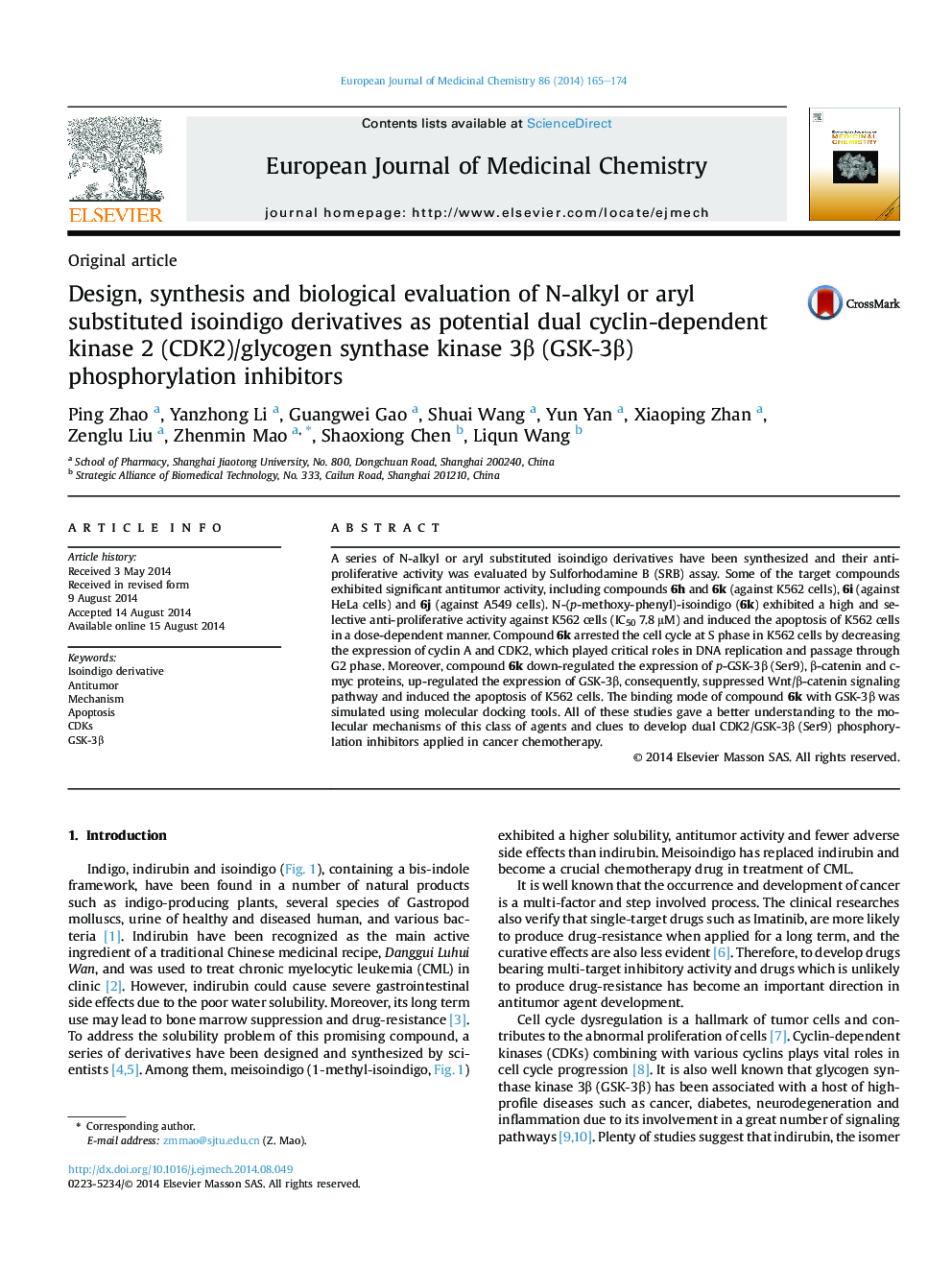| Article ID | Journal | Published Year | Pages | File Type |
|---|---|---|---|---|
| 1398846 | European Journal of Medicinal Chemistry | 2014 | 10 Pages |
•New isoindigo derivatives as dual CDK2/GSK-3β inhibitor were synthesized.•Anti-proliferative activity was tested by SRB assay and preliminary SAR was given.•Compound 6k blocked the cell cycle at S phase and induced the apoptosis of cells.•6k affected the level of CDK2, cyclin A and Wnt/β-catenin pathway proteins.•Docking studies explained the binding mode of 6k with GSK-3β.
A series of N-alkyl or aryl substituted isoindigo derivatives have been synthesized and their anti-proliferative activity was evaluated by Sulforhodamine B (SRB) assay. Some of the target compounds exhibited significant antitumor activity, including compounds 6h and 6k (against K562 cells), 6i (against HeLa cells) and 6j (against A549 cells). N-(p-methoxy-phenyl)-isoindigo (6k) exhibited a high and selective anti-proliferative activity against K562 cells (IC50 7.8 μM) and induced the apoptosis of K562 cells in a dose-dependent manner. Compound 6k arrested the cell cycle at S phase in K562 cells by decreasing the expression of cyclin A and CDK2, which played critical roles in DNA replication and passage through G2 phase. Moreover, compound 6k down-regulated the expression of p-GSK-3β (Ser9), β-catenin and c-myc proteins, up-regulated the expression of GSK-3β, consequently, suppressed Wnt/β-catenin signaling pathway and induced the apoptosis of K562 cells. The binding mode of compound 6k with GSK-3β was simulated using molecular docking tools. All of these studies gave a better understanding to the molecular mechanisms of this class of agents and clues to develop dual CDK2/GSK-3β (Ser9) phosphorylation inhibitors applied in cancer chemotherapy.
Graphical abstractFigure optionsDownload full-size imageDownload as PowerPoint slide
